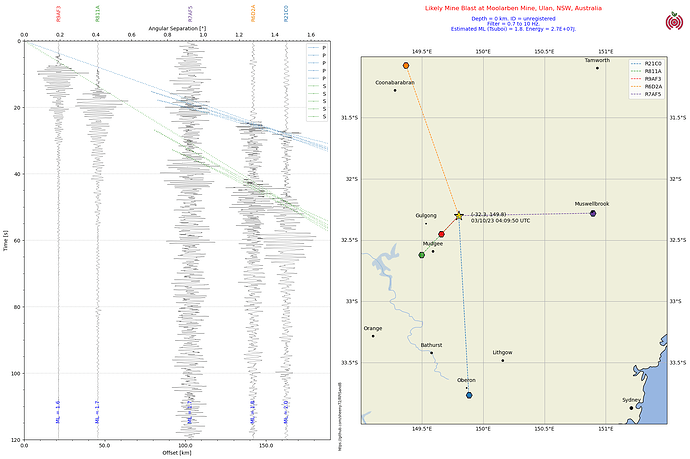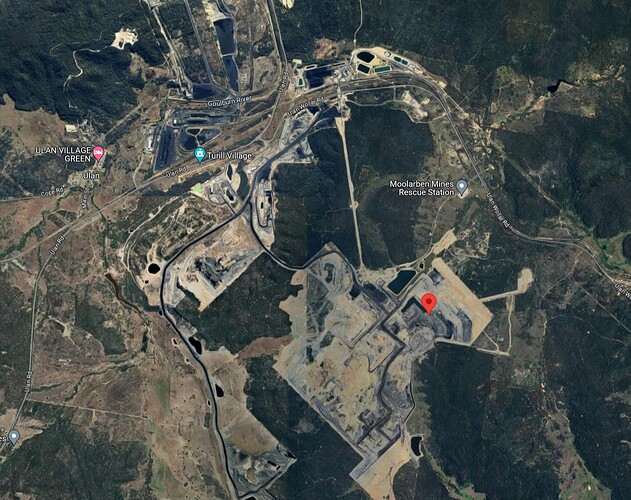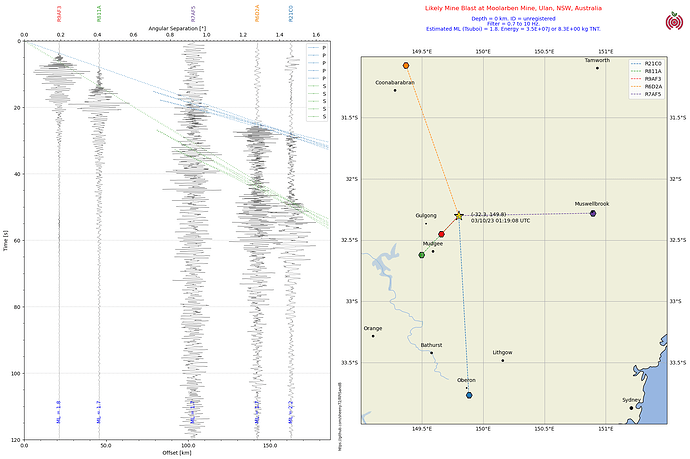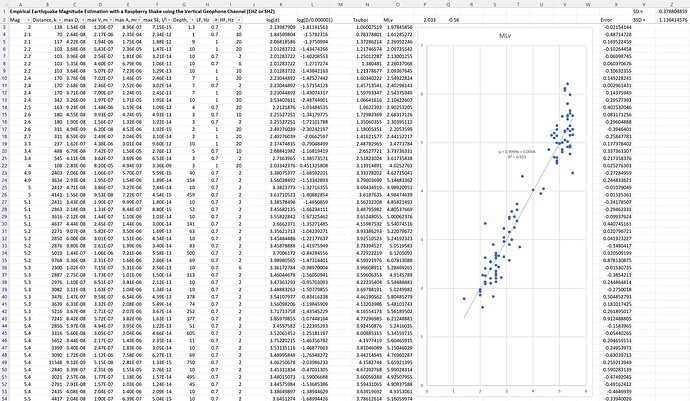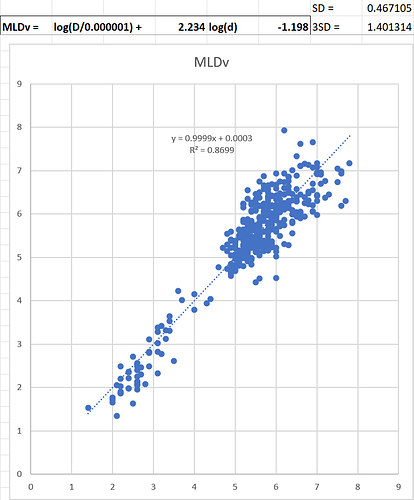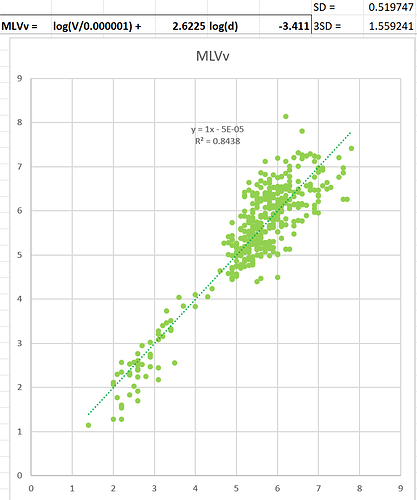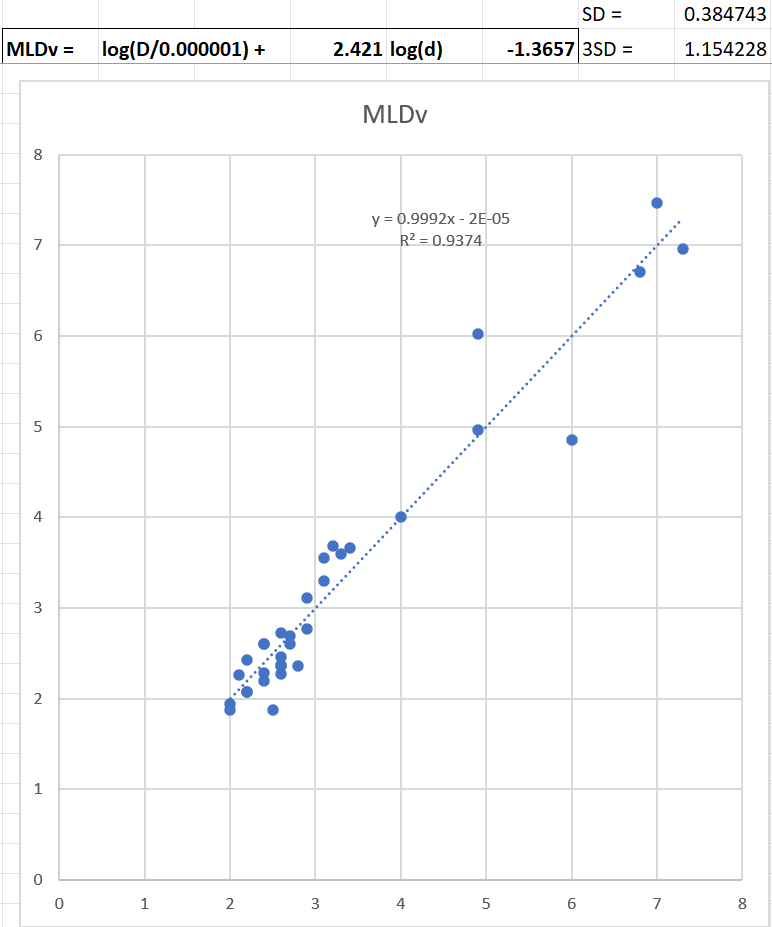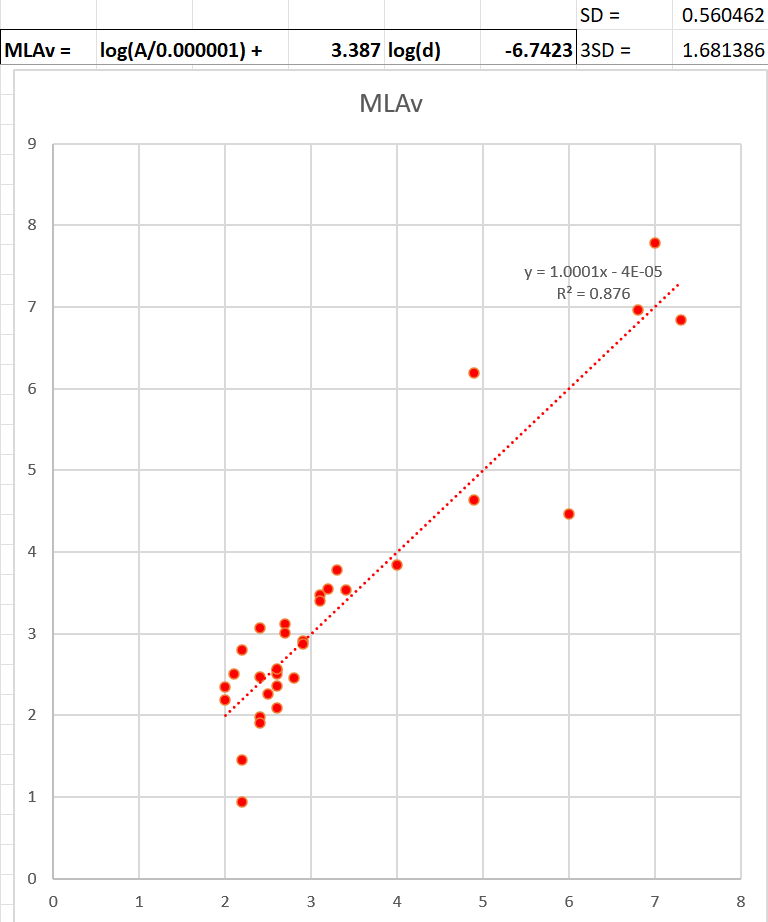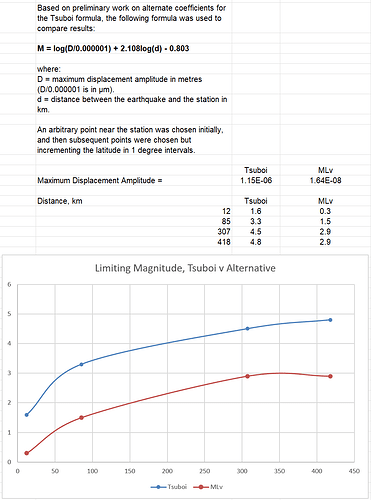I thought I’d share my latest incarnation of code for small local quakes. I’ve been playing with this for a while but have finally developed the code for estimating the magnitude (ML) for small local quakes using the Tsuboi Estimation Formula.
I use this code for both known local quakes and to locate small quakes that aren’t registered on other systems that appear of 3 or more local stations.
The code contains a lot of data that is unique to me and my local stations, but this can be replaced with the equivalent data for any location as required. For example, latitudes and longitudes for any town world wide can be found at https://www.latlong.net/
Here’s an example for a mine blast that I found on my shake this morning, and then found the corresponding signal on neighbouring shakes as well. Trial and error soon locates the time and place of the quake - in this case it coincides with the Moolarben Coal Mine near Ulan.
I chose the Tsuboi estimation formula for it’s simplicity. It just requires the maximum displacement amplitude of the signal and the distance to the epicentre to calculate. By changing my section plot from velocity traces to displacement traces the maximum displacement amplitude is easily found, and the epicentral distance is calculated anyway for the section plot.
Here’s the code:
# -*- coding: utf-8 -*-
"""
Created on Sun May 21 12:22:53 2023
@author: al72
"""
from obspy.clients.fdsn import Client
from obspy.core import UTCDateTime, Stream
import matplotlib.pyplot as plt
from obspy.taup import TauPyModel
import cartopy.crs as ccrs
import cartopy.feature as cfeature
import numpy as np
from matplotlib.transforms import blended_transform_factory
from matplotlib.cm import get_cmap
from obspy.geodetics import gps2dist_azimuth, kilometers2degrees, degrees2kilometers
from matplotlib.ticker import AutoMinorLocator
rs = Client('https://data.raspberryshake.org/')
# Build a station list of local stations so unwanted stations can be commented out
# as required to save typing
def stationList(sl):
sl += ['R21C0'] #Oberon
sl += ['R811A'] #Mudgee
sl += ['R9AF3'] #Gulgong
#sl += ['R571C'] #Coonabarabran
sl += ['R6D2A'] #Coonabarabran
#sl += ['RF35D'] #Narrabri
sl += ['R7AF5'] #Muswellbrook
#sl += ['R26B1'] #Murrumbateman
#sl += ['R3756'] #Chatswood
#sl += ['R9475'] #Sydney
#sl += ['R6707'] #Gungahlin
#sl += ['R69A2'] #Penrith
#sl += ['RB18D'] #Canberra
#sl += ['R9A9D'] #Brisbane
#sl += ['RCF6A'] #Brisbane
#sl += ['S6197'] #Heyfield
#sl += ['RD371'] #Melbourne
#sl += ['RC98F'] #Creswick
#sl += ['RA20F'] #Broken Hill
#sl += ['RC74C'] #Broken Hill
#print(sl)
return sl
# Build a stream of traces from each of the selected stations
def buildStream(strm):
n = len(slist) # n is the number of traces (stations) in the stream
tr1 = []
for i in range(0, n):
inv = rs.get_stations(network='AM', station=slist[i], level='RESP') # get the instrument response
#read each epoch to find the one that's active for the event
k=0
while True:
sta = inv[0][k] #station metadata
if sta.is_active(time=eventTime):
break
k += 1
latS = sta.latitude #active station latitude
lonS = sta.longitude #active station longitude
#eleS = sta.elevation #active station elevation is not required for this program
print(sta) # print the station on the console so you know which, if any, station fails to have data
trace = rs.get_waveforms('AM', station=slist[i], location = "00", channel = '*HZ', starttime = start, endtime = end) #vertical geophone could be EHZ or SHZ
trace.merge(method=0, fill_value='latest') #fill in any gaps in the data to prevent a crash
trace.detrend(type='demean') #detrend the data
tr1 = trace.remove_response(inventory=inv,zero_mean=True,pre_filt=ft,output='DISP',water_level=60, plot=False) # convert to displacement so ML can be estimated
# save data in the trace.stats for use later
tr1[0].stats.distance = gps2dist_azimuth(latS, lonS, latE, lonE)[0] # distance from the event to the station in metres
tr1[0].stats.latitude = latS # save the station latitude from the inventory with the trace
tr1[0].stats.longitude = lonS # save the station longitude from the inventory with the trace
tr1[0].stats.colour = colours[i % len(colours)] # assign a colour to the station/trace
tr1[0].stats.amp = np.abs(tr1[0].max()/1e-6) # max displacement amplitude in µm
tr1[0].stats.mL = np.log10(tr1[0].stats.amp) + 1.73*np.log10(tr1[0].stats.distance/1000) - 0.83 #ML by Tsuboi Empirical Formula
strm += tr1
#strm.plot(method='full', equal_scale=False)
return strm
# function to convert kilometres to degrees
def k2d(x):
return kilometers2degrees(x)
# function to convert degrees to kilometres
def d2k(x):
return degrees2kilometers(x)
# Build a list of local places for the map
# Lat Long Data from https://www.latlong.net/
# format ['Name', latitude, longitude, markersize]
#comment out those not used to minimise typing
places = [['Oberon', -33.704922, 149.862900, 2],
['Bathurst', -33.419281, 149.577499, 4],
['Lithgow', -33.480930, 150.157410, 4],
['Mudgee', -32.590439, 149.588684, 4],
['Orange', -33.283333, 149.100006, 4],
['Sydney', -33.868820, 151.209290, 6],
#['Newcastle', -32.926670, 151.780014, 5],
#['Wollongong', -34.427811, 150.893066, 5],
['Coonabarabran', -31.273911, 149.277420, 4],
['Gulgong', -32.362492, 149.532104, 2],
#['Narrabri', -30.325060, 149.782974, 4],
['Muswellbrook', -32.265221, 150.888184, 4],
['Tamworth', -31.092749, 150.932037, 4],
#['Boorowa', -34.437340, 148.717972, 2],
#['Cowra', -33.828144, 148.677856, 4],
#['Dubbo', -32.246380, 148.591263, 4],
#['Goulburn', -34.754539, 149.717819, 4],
#['Cooma', -36.235291, 149.125275, 4],
#['Grafton', -29.690960, 152.932968, 4],
#['Coffs Harbour', -30.296350, 153.115692, 4],
#['Armidale', -30.512960, 151.669418, 4],
#['Brisbane', -27.469770, 153.025131, 6],
#['Canberra', -35.280937, 149.130005, 6],
#['Albury', -36.073730, 146.913544, 4],
#['Wagga Wagga', -35.114750, 147.369614, 4],
#['Broken Hill', -31.955891, 141.465347, 4],
#['Wilcannia', -31.558981, 143.378464, 4],
#['Cobar', -31.494930, 145.840164, 4],
#['Melbourne', -37.813629, 144.963058, 6]
]
# Enter event data (estimate by trial and error for unregistered events)
eventTime = UTCDateTime(2023, 10, 3, 4, 9, 50) # (YYYY, m, d, H, M, S) **** Enter data****
latE = -32.3 # quake latitude + N -S **** Enter data****
lonE = 149.8 # quake longitude + E - W **** Enter data****
depth = 0 # quake depth, km **** Enter data****
mag = 0 # quake magnitude **** Enter data****
eventID = 'unregistered' # ID for the event **** Enter data****
locE = "Moolarben Mine, Ulan, NSW, Australia" # location name **** Enter data****
slist = []
stationList(slist)
# bandpass filter - select to suit system noise and range of quake
#ft = [0.09, 0.1, 0.8, 0.9]
#ft = [0.29, 0.3, 0.8, 0.9]
#ft = [0.49, 0.5, 2, 2.1]
#ft = [0.6, 0.7, 2, 2.1] #distant quake
#ft = [0.6, 0.7, 3, 3.1]
#ft = [0.6, 0.7, 4, 4.1]
#ft = [0.6, 0.7, 6, 6.1]
#ft = [0.6, 0.7, 8, 8.1]
#ft = [0.9, 1, 10, 10.1]
ft = [0.69, 0.7, 10, 10.1]
#ft = [0.9, 1, 20, 20.1]
#ft = [2.9, 3, 20, 20.1] #use for local quakes
# Pretty paired colors. Reorder to have saturated colors first and remove
# some colors at the end. This cmap is compatible with obspy taup - credit to Mark Vanstone for this code.
cmap = get_cmap('Paired', lut=12)
colours = ['#%02x%02x%02x' % tuple(int(col * 255) for col in cmap(i)[:3]) for i in range(12)]
colours = colours[1:][::2][:-1] + colours[::2][:-1]
print(colours)
#colours = ['r', 'b', 'g', 'k', 'c', 'm', 'purple', 'orange', 'gold', 'midnightblue'] # array of colours for stations and phases
plist = ('P', 'S') # phase list for plotting
#set up the plot
delay = 0 # for future development for longer distance quakes - leave as 0 for now!
duration = 120 #adjust duration to get detail required
start = eventTime + delay # for future development for longer distance quakes
end = start + duration # for future development for longer distance quakes
# Build the stream of traces/stations
st = Stream()
buildStream(st)
#set up the figure
fig = plt.figure(figsize=(20,14), dpi=100) # set to page size in inches
#build the section plot
ax1 = fig.add_subplot(1,2,1)
st.plot(type='section', plot_dx=50e3, recordlength=duration, time_down=True, linewidth=.3, alpha=0.8, grid_linewidth=.25, show=False, fig=fig)
# Plot customization: Add station labels to offset axis
ax = ax1.axes
transform = blended_transform_factory(ax.transData, ax.transAxes)
axt, axb = ax1.get_ylim() #get the top and bottom limits of the axes
#print(axt, axb)
j=0
mLav = 0
for t in st:
ax.text(t.stats.distance / 1e3, 1.05, t.stats.station, rotation=90,
va="bottom", ha="center", color=t.stats.colour, transform=transform, zorder=10)
ax.text(t.stats.distance / 1e3, axt-5, 'ML = '+str(np.round(t.stats.mL,1)), rotation=90,
va="bottom", ha="center", color = 'b', zorder=10) #print ML estimates
mLav += t.stats.mL
j += 1
#calculate average ML estimate
mLav = mLav/j
#Calculate Earthquake Total Energy
qenergy = 10**(1.5*mLav+4.8)
#setup secondary x axis
secax_x1 = ax1.secondary_xaxis('top', functions = (k2d, d2k)) #secondary axis in degrees separation
secax_x1.set_xlabel('Angular Separation [°]')
secax_x1.xaxis.set_minor_locator(AutoMinorLocator(10))
#plot arrivals times
model = TauPyModel(model="iasp91")
axl, axr = ax1.get_xlim() # get the left and right limits of the section plot
if axl<0: #if axl is negative, make it zero to start the range for phase plots
axl=0
#axl = 300 # uncomment to adjust left side of section plot, kms
ax1.set_xlim(left = axl)
for j in range (int(axl), int(axr)): # plot phase arrivals every kilometre
arr = model.get_travel_times(depth, k2d(j), phase_list=plist)
n = len(arr)
for i in range(0,n):
if j == int(axr)-1:
ax.plot(j, arr[i].time, marker='o', markersize=1, color = colours[plist.index(arr[i].name) % len(colours)], alpha=0.3, label = arr[i].name)
else:
ax.plot(j, arr[i].time, marker='o', markersize=1, color = colours[plist.index(arr[i].name) % len(colours)], alpha=0.3)
# if j/50 == int(j/50): # periodically plot the phase name
# ax.text(j, arr[i].time, arr[i].name, color=colours[plist.index(arr[i].name) % len(colours)], alpha=0.5, ha='center', va='center')
j+=1
ax.legend(loc = 'best')
#plot the map
ax2 = fig.add_subplot(1,2,2, projection=ccrs.PlateCarree())
mt = -31 # latitude of top of map
mb = -34 # latitude of the bottom of the map
ml = 149 # longitude of the left side of the map
mr = 151.5 # longitude of the right side of the map
ax2.set_extent([ml,mr,mt,mb], crs=ccrs.PlateCarree())
#ax2.coastlines(resolution='110m') # use for large scale maps
#ax2.stock_img() # use for large scale maps
# Create a features
states_provinces = cfeature.NaturalEarthFeature(
category='cultural',
name='admin_1_states_provinces_lines',
scale='50m',
facecolor='none')
ax2.add_feature(cfeature.LAND)
ax2.add_feature(cfeature.OCEAN)
ax2.add_feature(cfeature.COASTLINE)
ax2.add_feature(states_provinces, edgecolor='gray')
ax2.add_feature(cfeature.LAKES, alpha=0.5)
ax2.add_feature(cfeature.RIVERS)
ax2.gridlines(draw_labels=True)
#plot event/earthquake position on map
ax2.plot(lonE, latE,
color='yellow', marker='*', markersize=20, markeredgecolor='black',
transform=ccrs.Geodetic(),
)
# print the lat, long, and event time beside the event marker
ax2.text(lonE+0.1, latE-0.05, "("+str(latE)+", "+str(lonE)+")\n"+eventTime.strftime('%d/%m/%y %H:%M:%S UTC'))
#plot station positions on map
for tr in st:
ax2.plot(tr.stats.longitude, tr.stats.latitude,
color=tr.stats.colour, marker='H', markersize=12, markeredgecolor='black',
transform=ccrs.Geodetic(),
)
ax2.plot([tr.stats.longitude, lonE], [tr.stats.latitude, latE],
color=tr.stats.colour, linewidth=1, linestyle='--',
transform=ccrs.Geodetic(), label = tr.stats.station,
)
ax2.legend()
#plot places
for pl in places:
ax2.plot(pl[2], pl[1], color='k', marker='o', markersize=pl[3], markeredgecolor='k', transform=ccrs.Geodetic(), label=pl[0])
ax2.text(pl[2], pl[1]+0.05, pl[0], horizontalalignment='center', transform=ccrs.Geodetic())
#add Notes
#fig.text(0.75, 0.96, 'M'+str(mag)+' Earthquake at '+locE, ha='center', size = 'large', color='r') # use for identified earthquakes
fig.text(0.75, 0.96, 'Likely Mine Blast at '+locE, ha='center', size = 'large', color='r') # use for unidentified events
fig.text(0.75, 0.94, 'Depth = '+str(depth)+' km. ID = '+eventID, ha='center', color = 'b')
fig.text(0.75, 0.93, 'Filter = '+str(ft[1])+' to '+str(ft[2])+' Hz.', ha='center', color = 'b')
fig.text(0.75, 0.92, 'Estimated ML (Tsuboi) = '+str(np.round(mLav,1))+'. Energy = '+f"{qenergy:0.1E}"+'J.', ha='center', color = 'b')
# add github repository address for code
fig.text(0.51, 0.1,'https://github.com/sheeny72/RPiSandB', size='x-small', rotation=90)
# plot logos
rsl = plt.imread("RS logo.png")
newaxr = fig.add_axes([0.935, 0.915, 0.05, 0.05], anchor='NE', zorder=-1)
newaxr.imshow(rsl)
newaxr.axis('off')
plt.subplots_adjust(wspace=0.1)
# add a plt.savefig(filename) line here if required.
plt.show()
I have made other code examples of mine available for use on Github: sheeny72 (Alan Sheehan) · GitHub
Enjoy,
Al.
